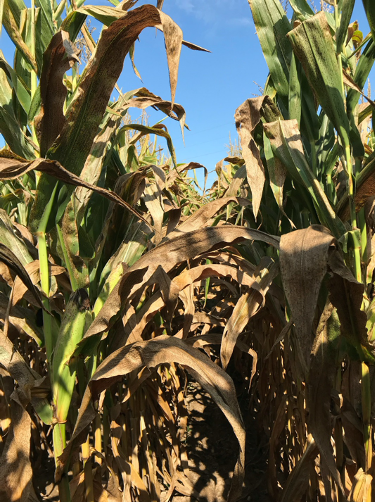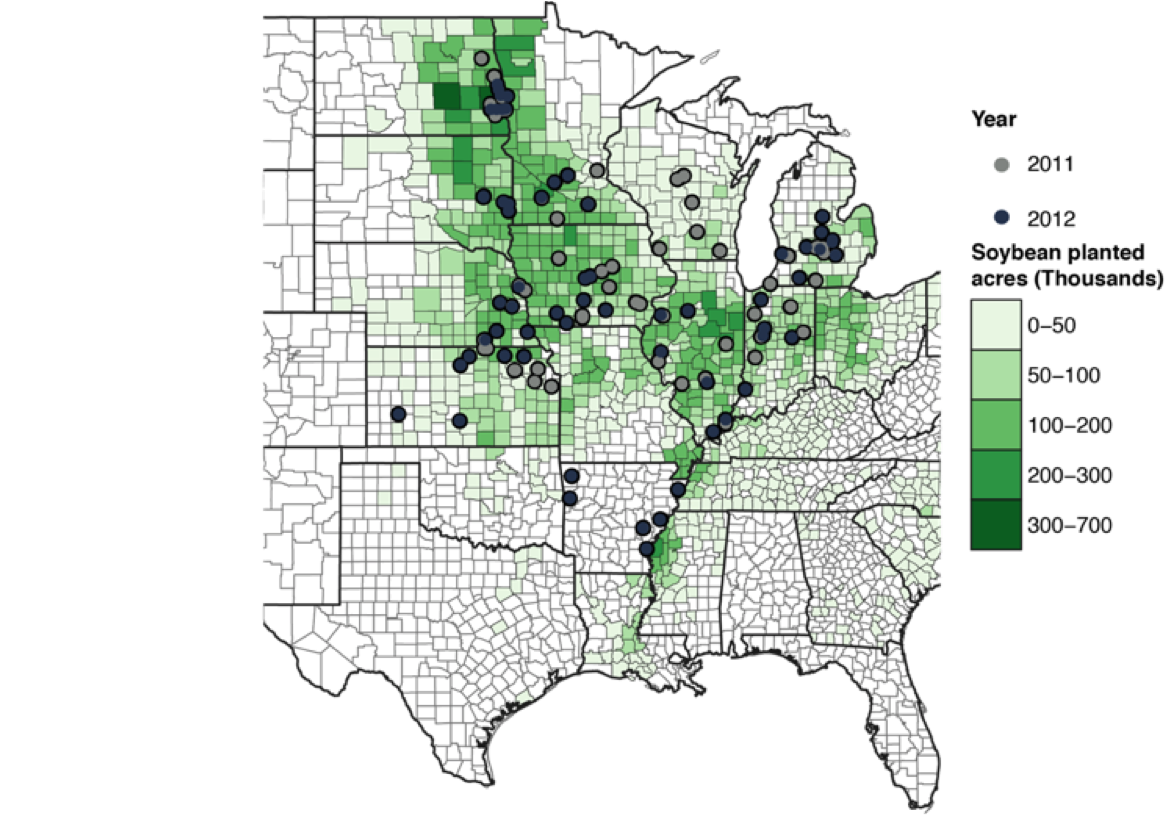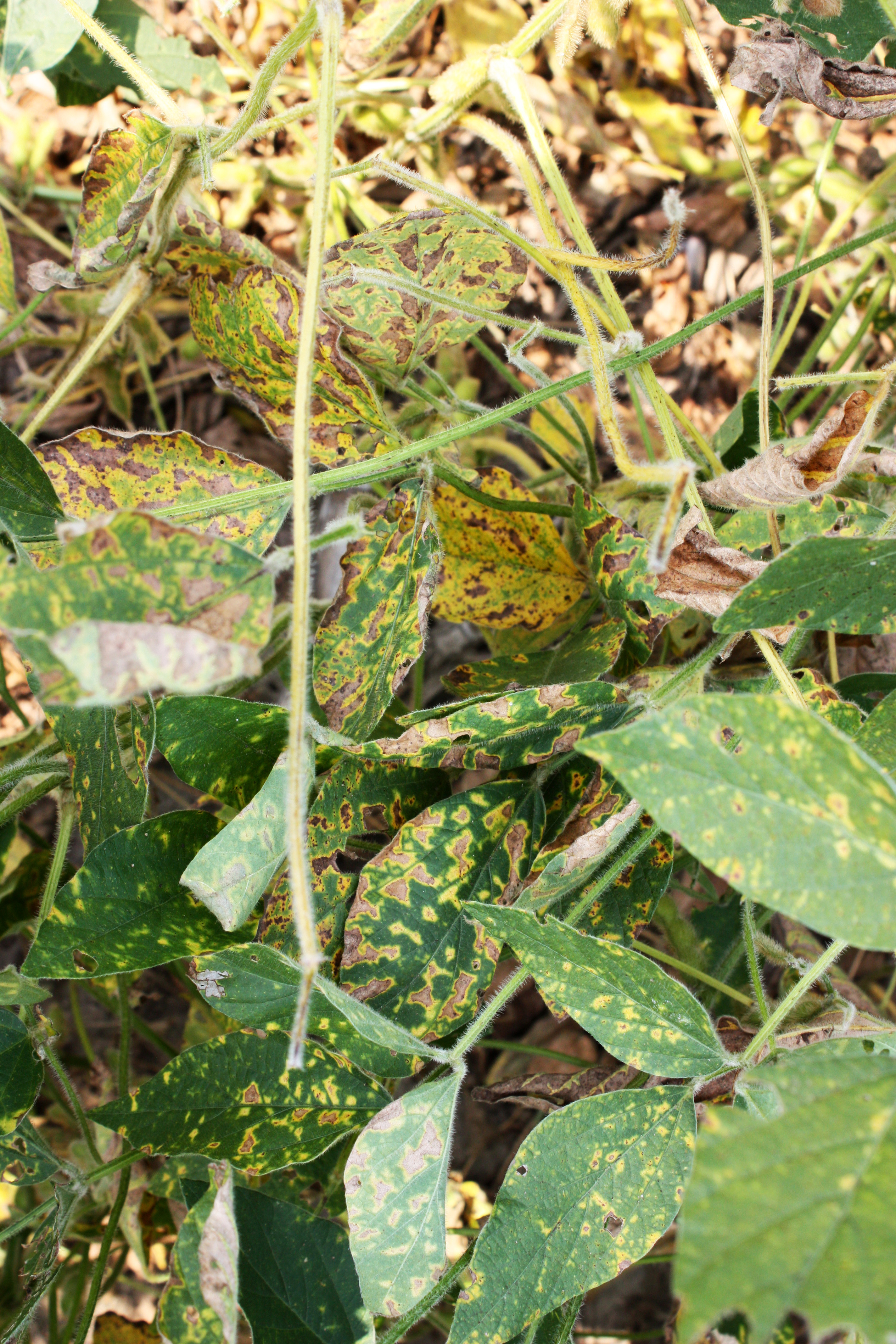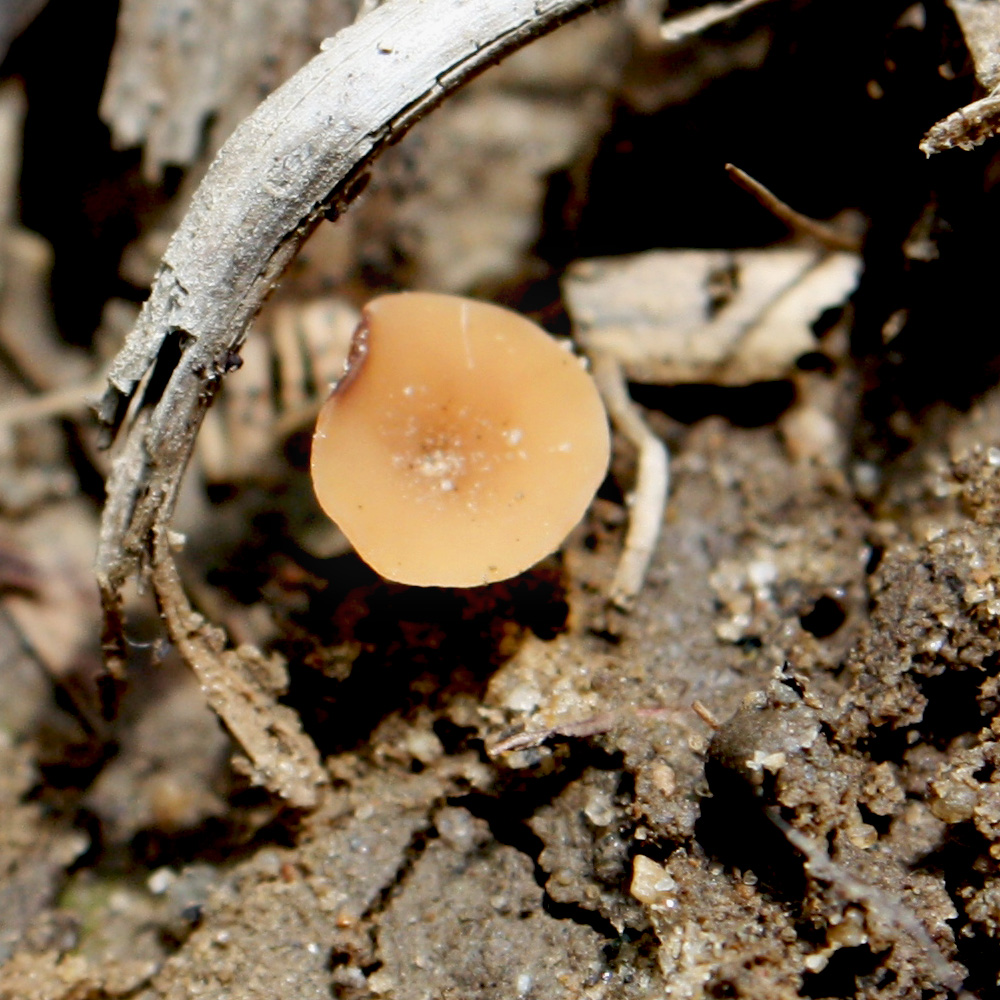Research
Overview of Current Program
 Tar spot, caused by the fungus Phyllachora maydis, is a newly introduced foliar pathogen of corn identified in Michigan in 2016. Signs of tar spot include small, raised, black fruiting bodies on both surfaces of the corn leaf. Sometimes these fruiting bodies are surrounded by a necrotic halo, forming a “fisheye” lesion. Yield losses in the US due to tar spot were first documented during the 2018 tar spot epidemic. Our lab is interested in the management of this disease, including the role of agronomic practices on tar spot, specifically how planting population and nitrogen fertility affects the severity of tar spot infections. To learn more...
Tar spot, caused by the fungus Phyllachora maydis, is a newly introduced foliar pathogen of corn identified in Michigan in 2016. Signs of tar spot include small, raised, black fruiting bodies on both surfaces of the corn leaf. Sometimes these fruiting bodies are surrounded by a necrotic halo, forming a “fisheye” lesion. Yield losses in the US due to tar spot were first documented during the 2018 tar spot epidemic. Our lab is interested in the management of this disease, including the role of agronomic practices on tar spot, specifically how planting population and nitrogen fertility affects the severity of tar spot infections. To learn more...
Many oomycete species are associated with stand establishment issues of soybeans and other crops. In 2011 and 2012 a survey was conducted to understand the oomycete species associated with soybean seedlings in North America. We have collected over  3,000 isolates representing over 80 oomycete species and have characterized virulence and fungicide sensitivity along with improved diagnostics for Phytophthora sojae and Phytophthora sansomeana. We have used this culture collection and amplicon sequencing to understand the diversity and ecology in relation to environmental and edaphic factors. These studies will lead to further investigation of factors and evolutionary forces that drive oomycete community structure for better management of a complex agricultural community. To learn more…
3,000 isolates representing over 80 oomycete species and have characterized virulence and fungicide sensitivity along with improved diagnostics for Phytophthora sojae and Phytophthora sansomeana. We have used this culture collection and amplicon sequencing to understand the diversity and ecology in relation to environmental and edaphic factors. These studies will lead to further investigation of factors and evolutionary forces that drive oomycete community structure for better management of a complex agricultural community. To learn more…

Soybean sudden death syndrome (SDS) is caused by the fungus Fusarium virguliforme, and has potential to significantly reduce yields. The 2010 growing season saw unprecedented levels of SDS across Michigan and north central states. Observations indicate that SDS appears to be established in the lower half of Michigan and is moving north. SDS is a difficult disease to detect and monitor as it is soil borne and does not always produce distinctive foliar symptoms. In addition, foliar SDS symptoms can often be confused with other soybean diseases. We are mapping the distribution of F. virguliforme in Michigan to county level and examining it’s interaction with the soybean cyst nematode (SCN) using a combination of molecular and culturing techniques. We are also developing and refining greenhouse screening techniques for SDS resistance in collaboration with MSU’s soybean breeder. For more information…
 Sclerotinia white mold, caused by Sclerotinia sclerotiorum, is a devastating disease of many crop plants and can cause significant economic losses in pea under the appropriate environmental conditions. We are interested in dissecting the pea-Sclerotinia sclerotiorum interaction by examining the host and pathogen mRNA expression profile with next generation sequencing technology. Despite being Mendel’s model system, few genomic resources exist for pea. The expression profiling studies will provide valuable information on the genetics of the interaction between host and pathogen. Identification of genes and pathways involved in partial resistance will lead to a better understanding of the interaction and development of markers for breeding resistance to S. sclerotiorum. We envision that these studies will lead to further insights and solutions for development of resistant material not only in pea but in other crops affected by Sclerotinia spp. To read more…
Sclerotinia white mold, caused by Sclerotinia sclerotiorum, is a devastating disease of many crop plants and can cause significant economic losses in pea under the appropriate environmental conditions. We are interested in dissecting the pea-Sclerotinia sclerotiorum interaction by examining the host and pathogen mRNA expression profile with next generation sequencing technology. Despite being Mendel’s model system, few genomic resources exist for pea. The expression profiling studies will provide valuable information on the genetics of the interaction between host and pathogen. Identification of genes and pathways involved in partial resistance will lead to a better understanding of the interaction and development of markers for breeding resistance to S. sclerotiorum. We envision that these studies will lead to further insights and solutions for development of resistant material not only in pea but in other crops affected by Sclerotinia spp. To read more…
We have a strong interest in the development and more importantly application of molecular detection assays including high-through put systems and have worked on the development and application of several real-time PCR and standard PCR multiplex assays. We are particularly interested in utilizing genomic resources and nucleic acid detection technologies to improve our understanding of fungal biology, disease etiology and epidemiology.
Extension and Outreach Activities
Extension activities include participation in field days, annual meetings, publication of Field Crop Advisory Team alerts throughout the season as disease issues develop. As well as participation in the Legume ipmPIPE and Asian soybean rust ipm PIPE programs by providing disease observation data for Michigan and assisting with national commentary.



 Print
Print Email
Email